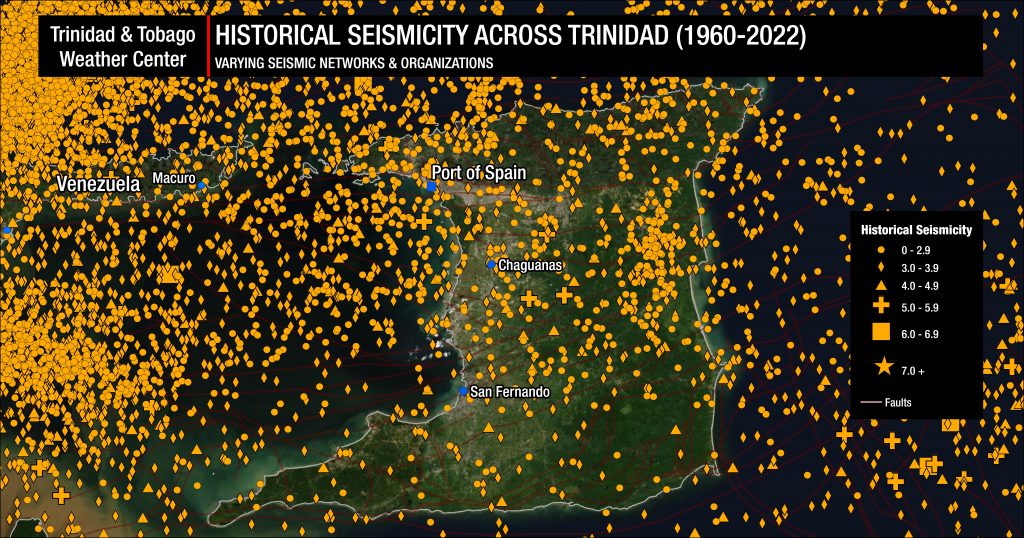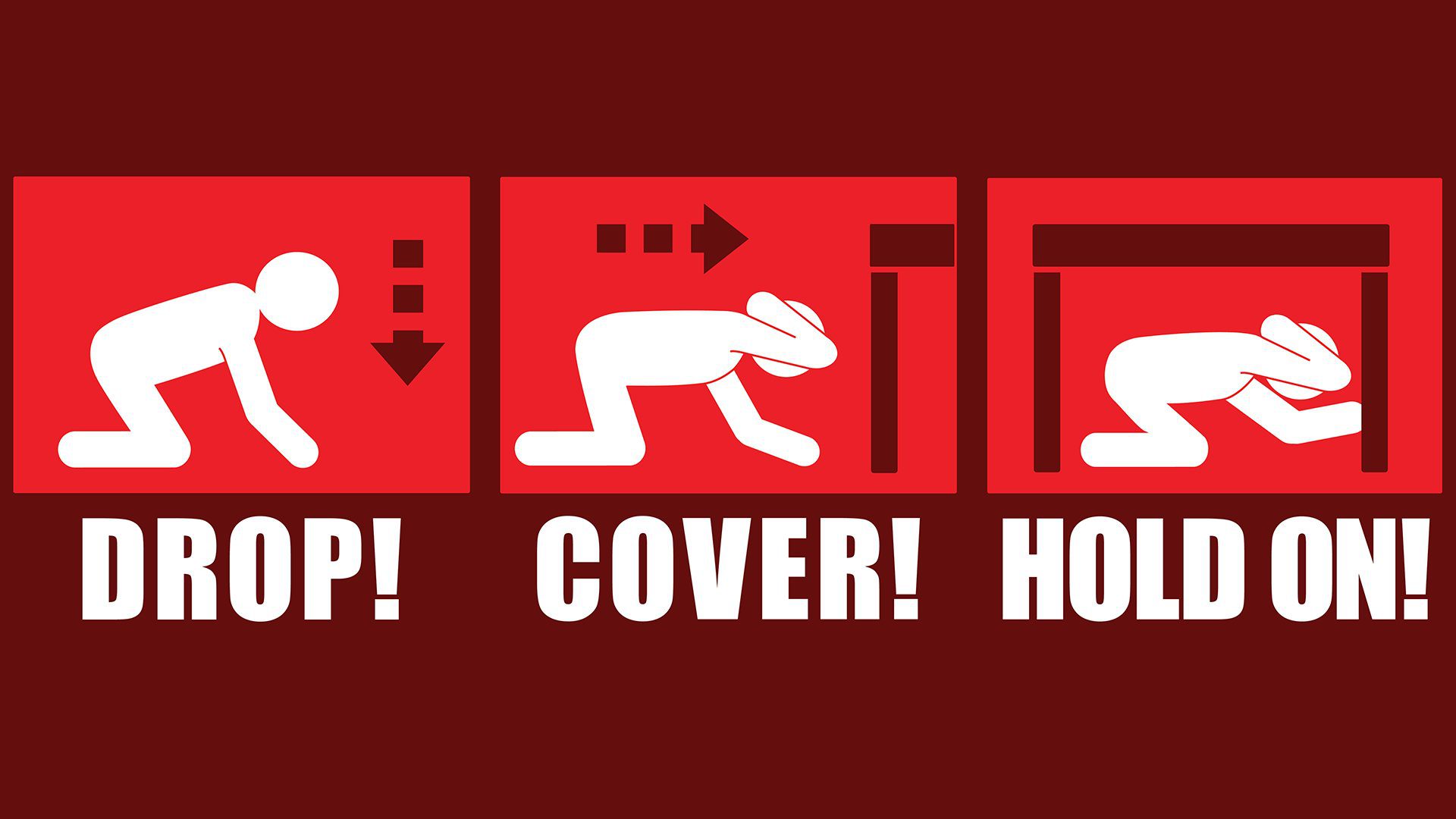Based on reviewed information by the University of the West Indies Seismic Research Center (UWI SRC), the earthquake that struck on Tuesday afternoon on February 13th, 2024, has been upgraded from a preliminary magnitude of 3.5 to magnitude 4.4, with a notable shift in location.
The new earthquake location is centered at 62.350°W and 10.020°N, approximately 115 kilometers southwest of Port of Spain, Trinidad and Tobago. It was at a depth of 5 kilometers, which is quite shallow for a quake of tectonic origin.
This information has been reviewed by the UWI SRC, the authority for seismic and volcanological information in the English-speaking Eastern Caribbean. Quake parameters may change upon further review by an analyst at the UWI SRC.
Weak shaking has been reported across northeastern Venezuela, with a quick, short jolt lasting no more than a few seconds. You can submit felt reports to the University of the West Indies Seismic Research Centre.
There is no tsunami threat.
There are four conditions necessary for an earthquake to cause a tsunami:
- The earthquake must occur beneath the ocean or cause material to slide within or into the ocean.
- The earthquake must be strong, with at least a magnitude of 6.5.
- The earthquake must rupture the Earth’s surface, and it must occur at a shallow depth – less than 70 kilometers below the surface of the Earth.
- The earthquake must cause vertical movement of the seafloor (up to several meters).
None of these conditions occurred.
Note that different seismic monitoring agencies use different methods, or several methods, for processing quake parameters across the globe. Each method has its limitations and will likely produce different results within the range of the data’s uncertainty. This is generally accepted within the scientific community.

The Venezuelan Foundation for Seismological Research recorded this quake within the Gulf of Paria at a magnitude of 3.6, at a similar shallow depth of 6.4 kilometers.
Read More
Earthquake Magnitude & Intensity
Can earthquakes be predicted or forecasted?
The Gulf of Paria is yet another very faulted, seismically complex area surrounding Trinidad. At this zone, the extension of the Los Bajos Fault from southwestern Trinidad and the Warm Springs Fault from Central Trinidad meets the El Pilar fault. This complex network of faults also includes small, conjugate, or perpendicular faults.
High levels of seismic activity occur in this zone, with both shallow and moderate-depth earthquakes generally remaining less than 50 kilometers in depth. The UWI SRC stated during a Q&A of the earthquake swarm between January and February 2018 that this location can generate a magnitude 6.5 or greater earthquake.
According to the UWI SRC, approximately 40 events of magnitude 2.1 and above are located in this area annually. One event in the magnitude range of 4.6-5.0 is expected every year, and one in the magnitude range of 5.1-5.5 approximately every five years. The zone generates earthquakes ranging in depth from less than 15 kilometers to over 150 kilometers. These deeper events are usually associated with subduction within the Paria Peninsula (Zone 1).
The UWI SRC also noted that most events of depth less than 16 kilometers tend to be clustered near 10.35°N and 62.3°W in the Gulf of Paria. The events closer to Trinidad form a more diffuse cloud and tend to be located deeper than 15 kilometers.
Nearly 40 events have been recorded within 20 kilometers of Tuesday afternoon’s earthquake in the last 70 years. The largest recorded events within 20 kilometers of Tuesday’s quake occurred on January 16th, 1962, and December 7th, 2021, registering magnitudes of 5.7 and 5.3, respectively, on the Richter Scale. Seismic events in this area generally occur at depths between 0 and 70 kilometers below the surface, but events as deep as 158.6 kilometers have been recorded.
Can weather (and hot air temperatures) cause earthquakes?
Weather does not affect nor cause seismic events in Trinidad and Tobago. When hot weather occurs, one of the most common comments is that it is “earthquake weather?”
It’s a fairly common misconception with origins as early as the 4th century B.C. Aristotle proposed that earthquakes were caused by winds trapped in subterranean caves. Small tremors were thought to have been caused by air pushing on the cavern roofs and large ones by the air breaking the surface.
This theory leads to a belief in earthquake weather, that because a large amount of air was trapped underground, the weather would be hot and calm before an earthquake. A later theory stated that earthquakes occurred in calm, cloudy conditions and were usually preceded by strong winds, fireballs, and meteors.
There is no such thing as “earthquake weather.” Statistically, there is approximately an equal distribution of earthquakes in cold weather, hot weather, rainy weather, etc.
Very large low-pressure changes associated with major storm systems (typhoons, hurricanes, etc.) are known to trigger episodes of fault slip (slow earthquakes) in the Earth’s crust. They may also play a role in triggering some damaging earthquakes. However, the numbers are small and are not statistically significant.
Water can remove sediment or infiltrate the ground and increase or decrease the overburden pressures. This change in ground pressure can trigger minor seismic activity. Excessive rainfall, not hot weather, can also contribute to minor seismic activity.
Earthquake weather does not exist, and hot temperatures do not cause earthquakes.
Source: USGS, Dr. Malcom Johnston
Has there been an increase in seismic activity?

Trinidad and Tobago and the surrounding region are very seismically active. Across the Eastern Caribbean, over 2,200 earthquakes are recorded annually. Since 1990, the University of the West Indies Seismic Research Centre has recorded an annual average of 280 earthquakes in the Trinidad and Tobago region (area bounded by 9.5°- 11.5°N & 59.5°W – 63.5°W). Of these 280 quakes, 50 of these seismic events are, on average, above magnitude 3.5.
Most earthquakes occur northwest of Trinidad in an area known as North of the Paria Peninsula, which has the second-highest seismicity in the Eastern Caribbean. According to the UWI SRC, approximately 65 events of magnitude 2.1 and above are located in the area annually.
However, the UWI SRC has said regional seismic and volcanic activity has been elevated for several years in its annual report for 2020 to 2021.
On average, the Eastern Caribbean has seen a pattern of major (M7.0-M7.9) quakes every 20 to 30 years. That pattern has stayed true. The last major (M7.0-7.9) quake occurred north of Martinique in 2007.
Historical patterns indicate that great quakes (M8.0+) on the Richter Scale have occurred every century in the region. The probability of another event at that level is high since the last >M8.0 earthquake occurred in 1843. While it is impossible to say definitively when the next great quake will occur in the region, the time since the last one is now more than 170 years ago.
It is important to note seismic activity *cannot* be predicted – meaning the precise time, date, magnitude, depth, etc., cannot be known ahead of time based on current research and technology.
Now is the time to create or go over your earthquake preparedness plan and know what to do during, before, and after an earthquake.













